Mastering the Perfect Prompt Formula (for ChatGPT and Google Gemini)
No matter what industry you're in, crafting effective prompts for ChatGPT and Google Gemini is a skill that's gaining momentum.
This article serves as your comprehensive guide, exploring the six building blocks of successful prompting.
Key Takeaways:
- Understanding the building blocks of prompts - Task, Context, Exemplars, Persona, Format, and Tone - and their hierarchy is crucial to generate quality outputs
- Balancing the right amount of context with your task can create a successful prompt, and exemplars (examples) can greatly enhance output quality
- Persona, format, and tone can refine your prompt, helping ChatGPT and Gemini understand the 'who', 'how', and 'in what style' of your requirements
Watch it in action
Resources
- Top 8 ChatGPT Productivity Tips for Work (link)
1. Clearly articulating the Task
The six building blocks that shape a high-quality prompt are Task, Context, Exemplars, Persona, Format, and Tone.
A prompt without a task may not generate meaningful output. In contrast, a task without context could still produce something relevant, even if not as precise.
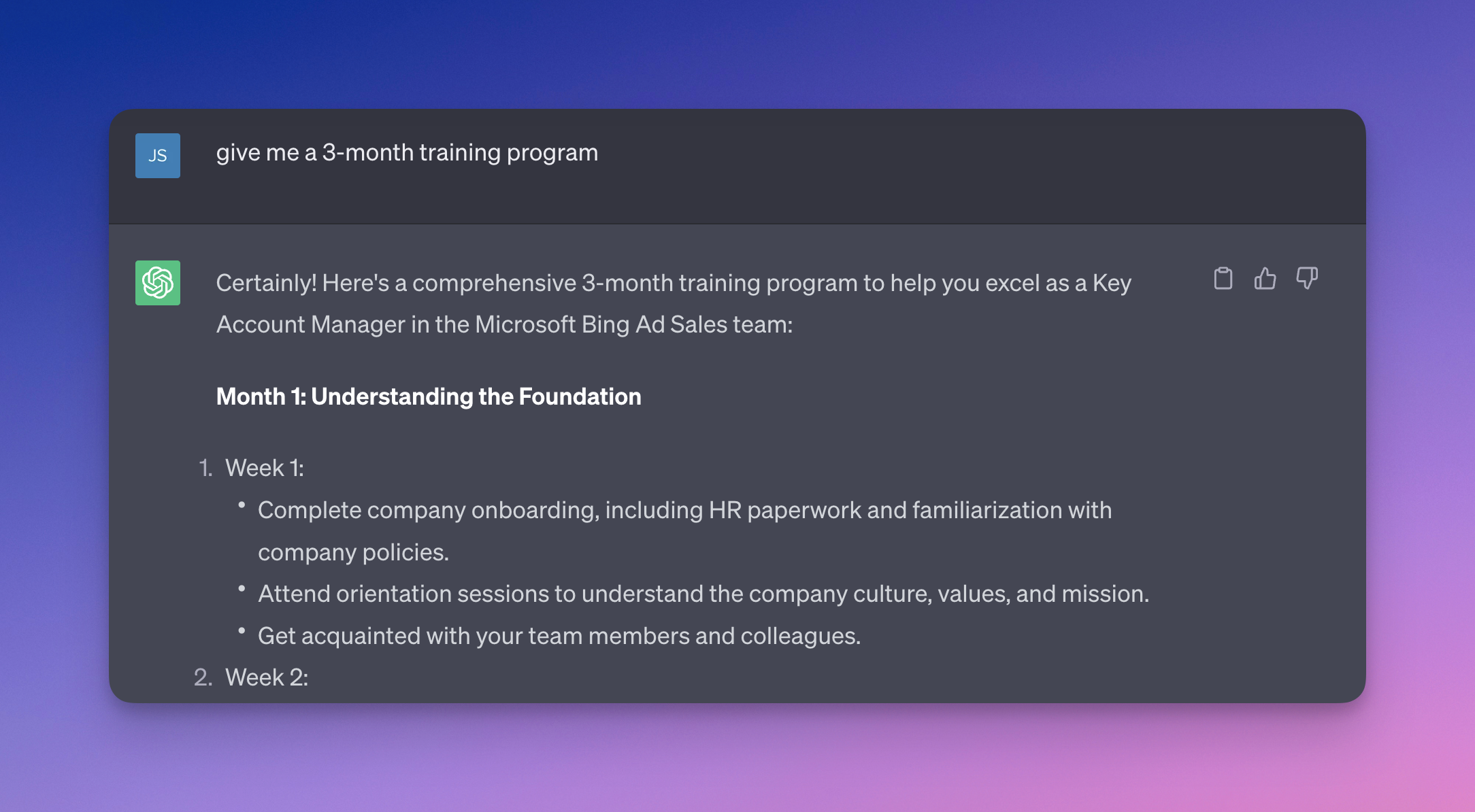
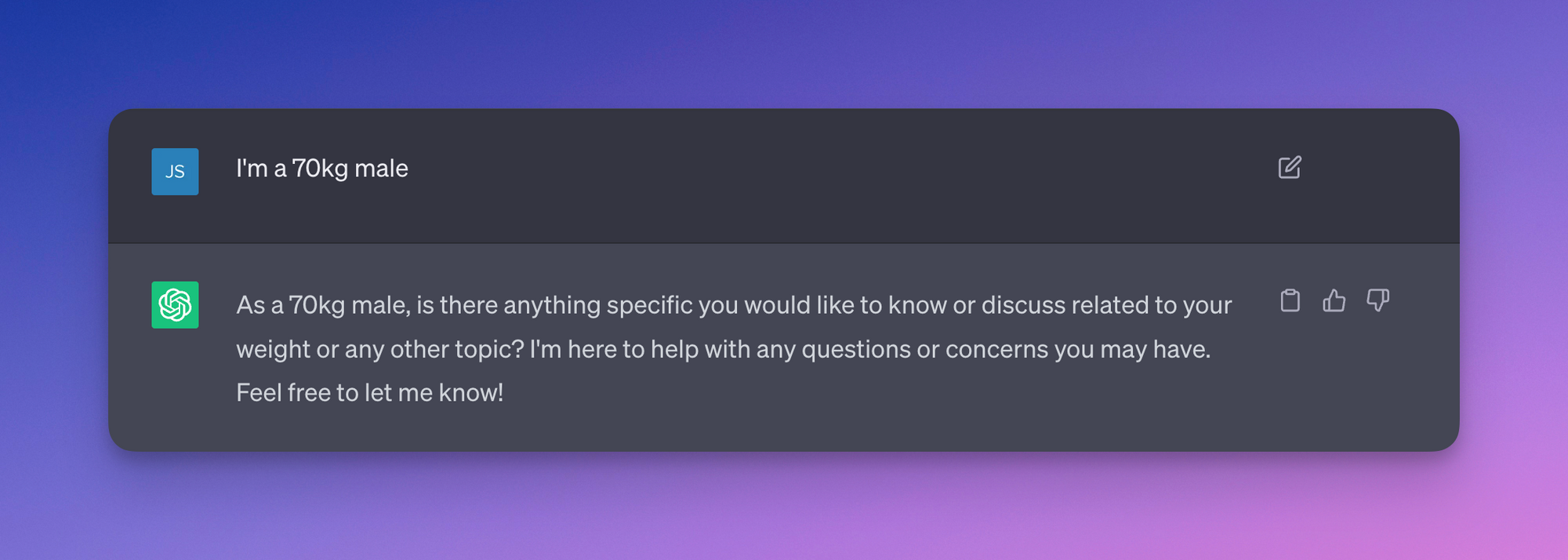
2. Providing relevant Context
As for the context, it might seem challenging to determine how much information to provide. Here are three questions that can guide you:
- What is the user’s background?
- What does success look like?
- What environment are they in?
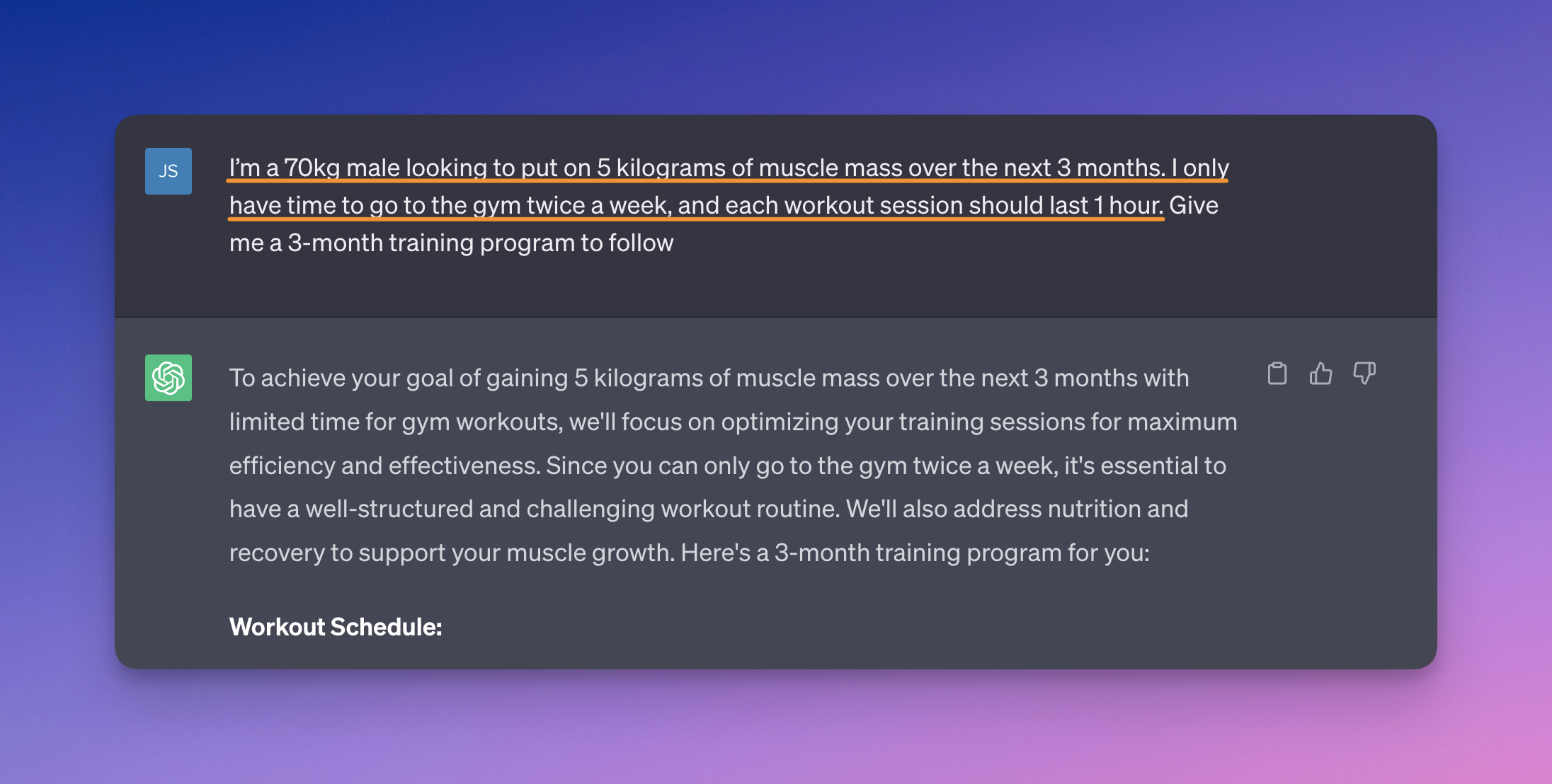
Providing the right context will help constrain the endless possibilities of AI and yield results that cater to your specific needs.
3. The Power of Exemplars
Exemplars, or examples, are powerful tools that can drastically improve the quality of the output. They range from simple structures to comprehensive frameworks.
For instance, you could ask ChatGPT to re-write a bullet point from a resume using a particular structure or to prepare an answer to an interview question using the STAR answer framework.
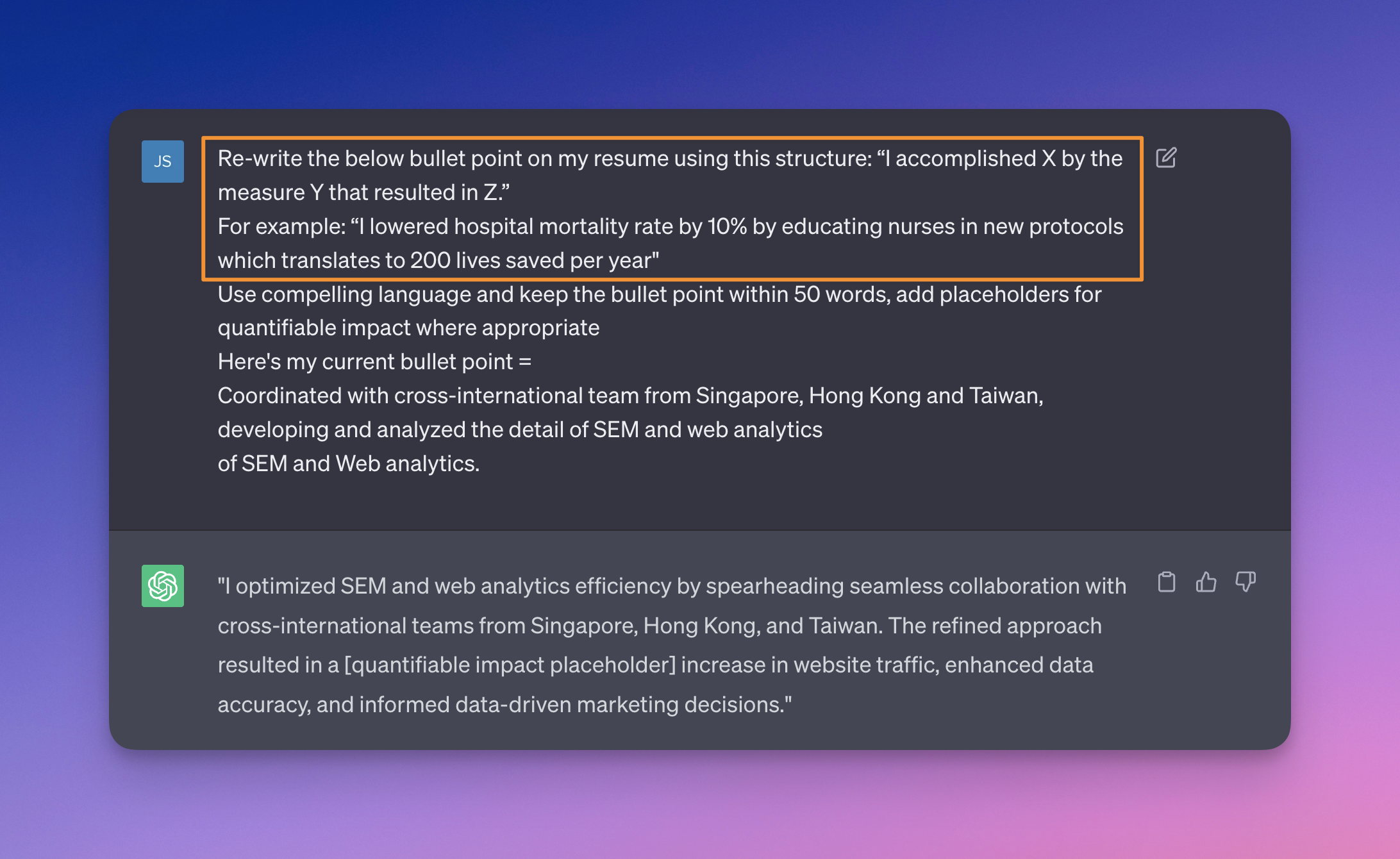
Exemplars aren't necessary for every prompt but can significantly enhance the quality of your output when relevant.
4. Defining the Persona
The 'Persona' in your prompt defines who you want ChatGPT or Gemini to emulate.
The persona can be a real-life expert or even a fictional character, giving you a diverse range of voices to choose from.
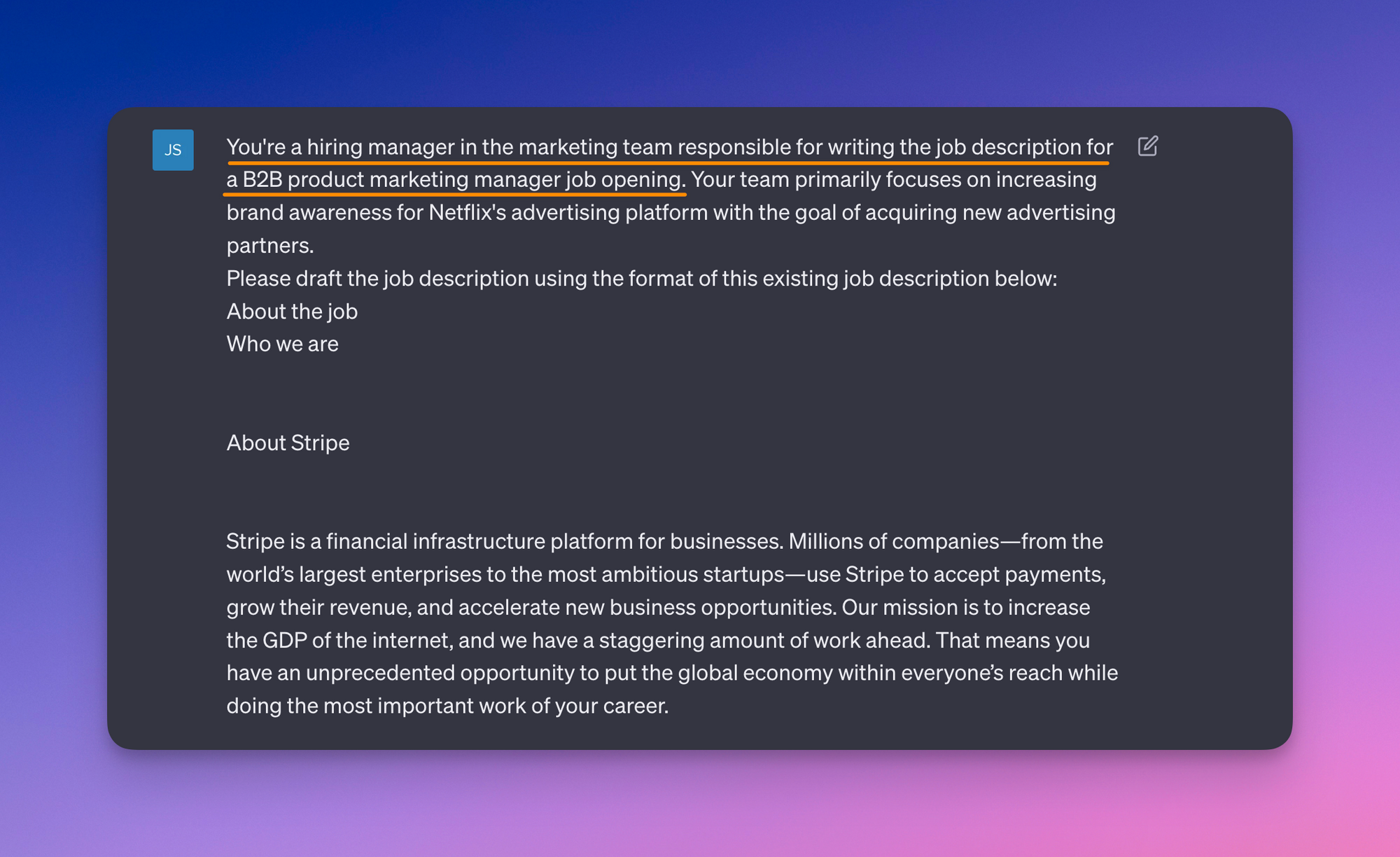
5. Format - Visualizing the End Result
Visualizing how you want the end result to look like can guide the 'Format' of your prompt. It can be a table, bullet points, paragraphs, codeblocks, or markdown, depending on what you find most useful.
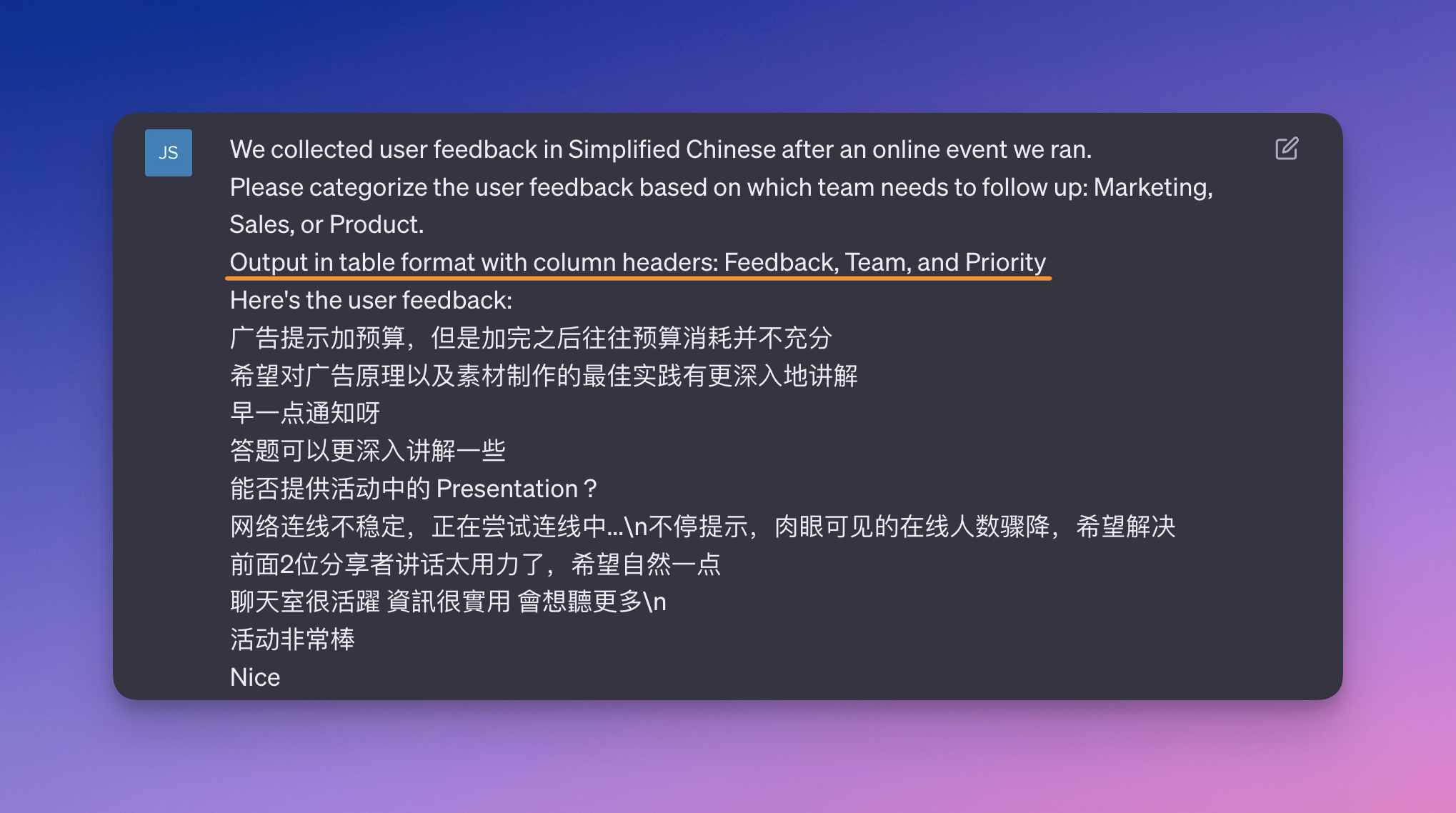
6. Setting the Tone
Tone is all about the voice of your output. Are you looking for a casual, formal, witty, enthusiastic, or pessimistic output?
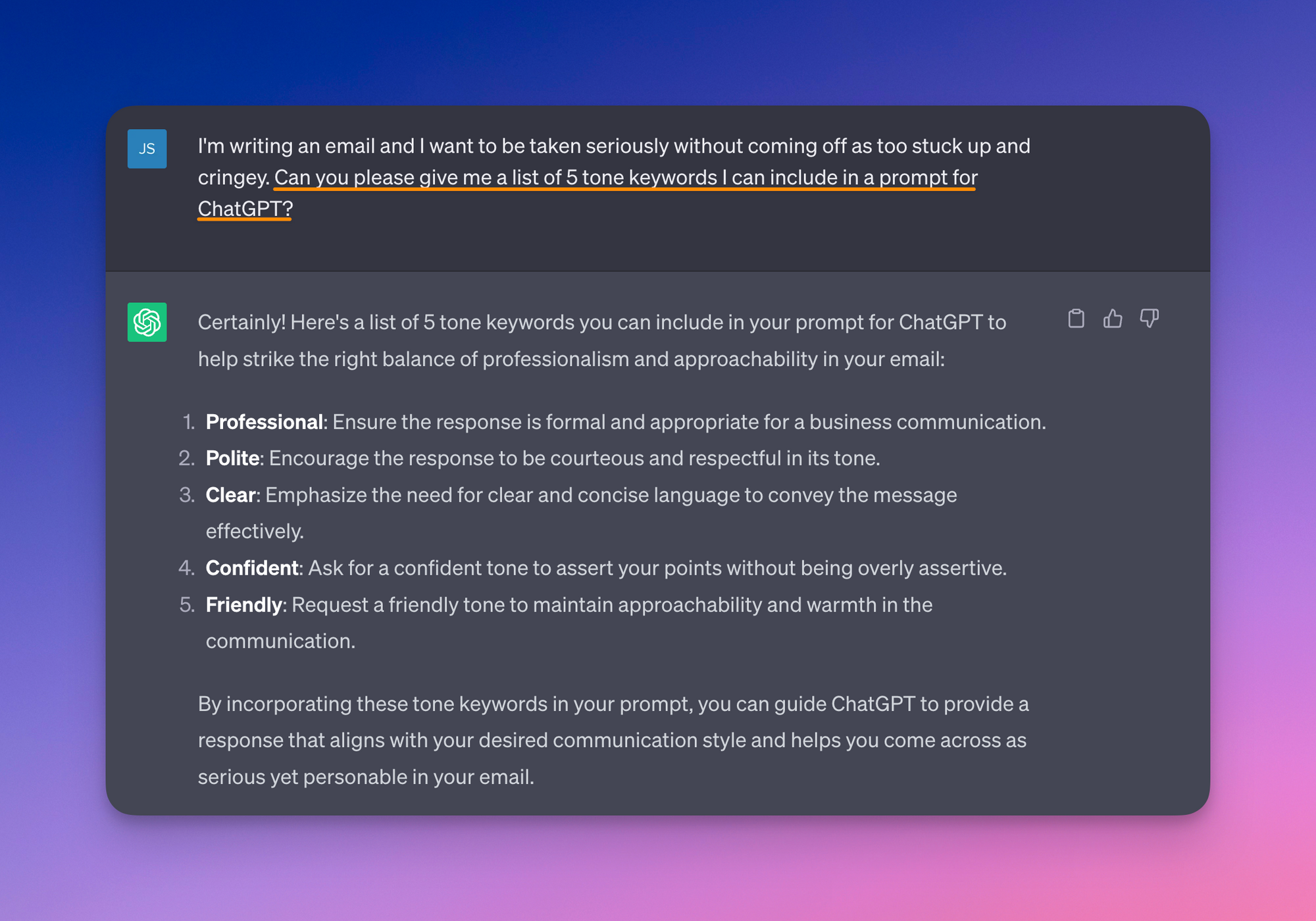
Putting It All Together
Now, let’s consider a comprehensive prompt that integrates all six components:
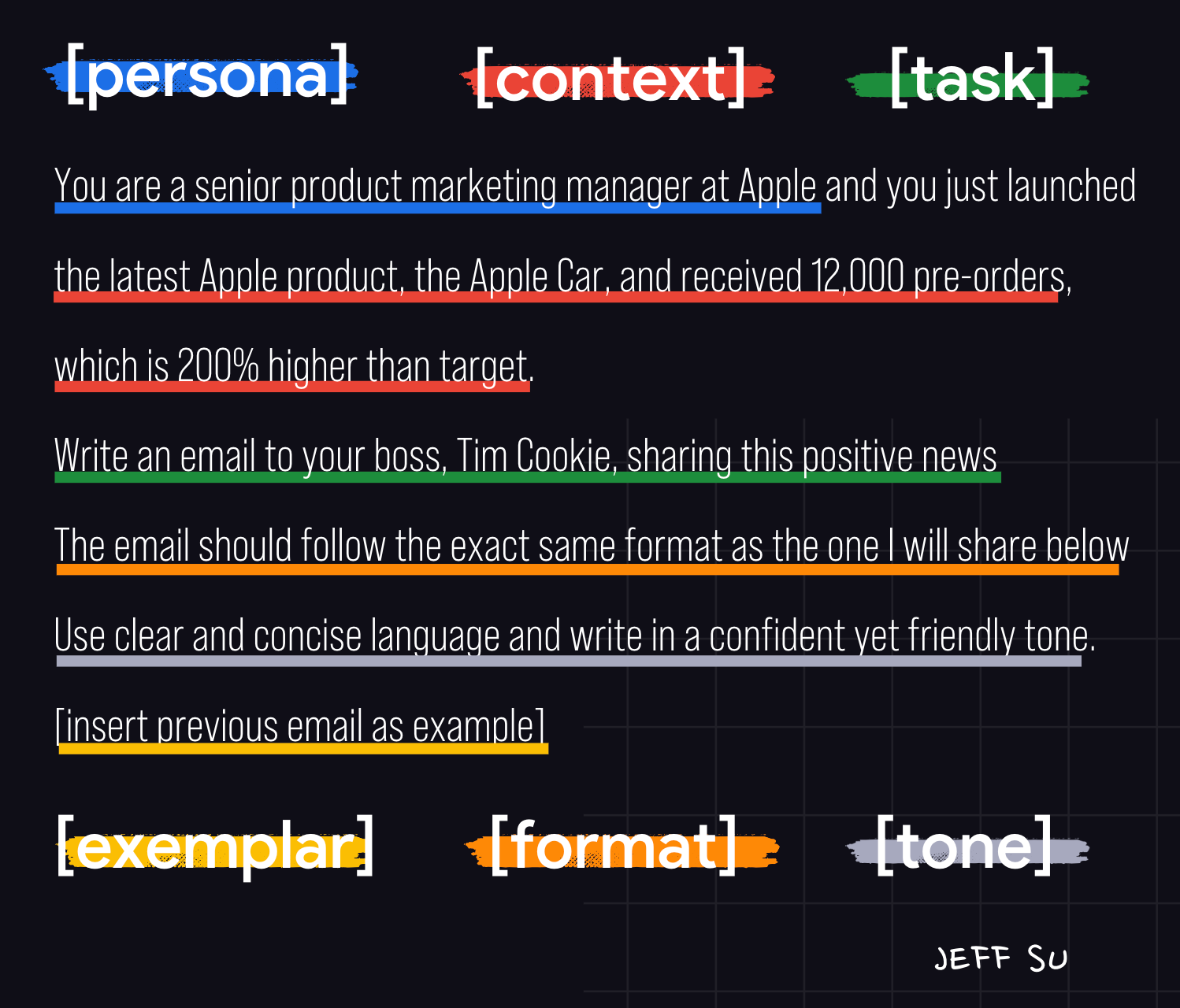
This prompt showcases how to use each building block effectively, leading to a high-quality output.
With these tools at your disposal, you're all set to master prompting on ChatGPT and Google Gemini. Stay tuned for more in-depth articles, and in the meantime, happy prompting!
Want to learn more about ChatGPT and Google Gemini?
Check out my Top 8 ChatGPT Productivity Tips for Work!